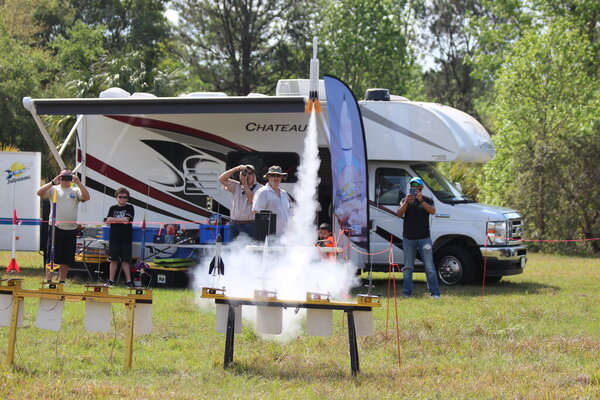jadebox
Well-known member
One of the reasons we bought an RV was to make our days spent out in the middle of nowhere punching holes into the sky an even more pleasurable experience.

Our local model rocket club holds monthly launches at a park just six minutes from our house. While far from a necessity, our RV does make attending the launches more enjoyable. Instead of struggling to erect a pop-up canopy for shade, we just press a button. If it gets too hot or cold, we have an escape. And ... well ... it provides a rest room just in case.
To join others launching larger rockets we often have to trek hundreds of miles to remote locations such as cotton farms in rural Georgia. So far we have only made one such trip. Staying at a nice KOA campground saved us a bit over a hotel and we met some interesting people. I did the math and we just have to attend about 450 such launches over the next 15 years for the RV to pay for itself!

Our local model rocket club holds monthly launches at a park just six minutes from our house. While far from a necessity, our RV does make attending the launches more enjoyable. Instead of struggling to erect a pop-up canopy for shade, we just press a button. If it gets too hot or cold, we have an escape. And ... well ... it provides a rest room just in case.
To join others launching larger rockets we often have to trek hundreds of miles to remote locations such as cotton farms in rural Georgia. So far we have only made one such trip. Staying at a nice KOA campground saved us a bit over a hotel and we met some interesting people. I did the math and we just have to attend about 450 such launches over the next 15 years for the RV to pay for itself!
